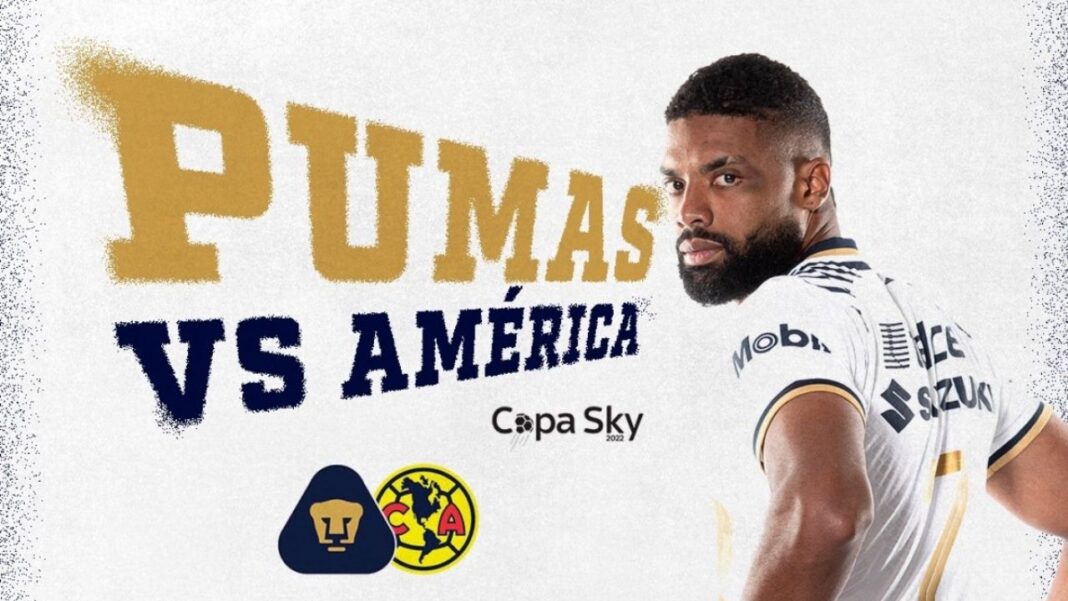Introduction:
The rivalry between Club América and Club Universidad Nacional, also known as Pumas, is one of the most intense in Mexican soccer. Both teams have a rich history and a massive fan base that takes pride in their respective clubs. In recent years, there have been several instances where the positions of Club América have clashed with those of Club Universidad Nacional. In this article, we will analyze the positions taken by Club América against Club Universidad Nacional and understand the reasons behind them.
History of the Rivalry:
The rivalry between Club América and Club Universidad Nacional dates back to the 1950s, where both teams had their share of successes and failures. However, it was in the 1970s when the rivalry began to take shape, with both teams dominating the Mexican soccer scene. The rivalry has been intense ever since, with both teams fighting for supremacy in Mexico and on the international stage.
Club América’s Positions Against Club Universidad Nacional:
Over the years, Club América has taken various positions against Club Universidad Nacional. Here are some of the most notable ones:
Refereeing Decisions: Club América has often accused Club Universidad Nacional of receiving favorable decisions from referees. In 2018, during a match between the two teams, Club América’s coach, Miguel Herrera, accused the referee of being biased towards Club Universidad Nacional. He went on to say that the referee had “stolen” the match from Club América. This position is not new, as both teams have accused each other of benefiting from referee decisions in the past.
Club Ownership: Club América’s ownership has criticized Club Universidad Nacional’s ownership in the past. In 2019, Club América’s owner, Emilio Azcárraga Jean, accused Club Universidad Nacional’s owner of not investing enough in the club. He went on to say that Club América’s ownership had invested heavily in the club and that this was the reason why they were more successful than Club Universidad Nacional.
Player Transfers: Club América has often criticized Club Universidad Nacional for their transfer policies. In 2020, Club América’s coach, Miguel Herrera, criticized Club Universidad Nacional for selling their best players to other clubs. He went on to say that this was a sign that the club was not committed to winning and was only interested in making money.
Fan Behavior: Club América has accused Club Universidad Nacional’s fans of being violent and aggressive. In 2018, during a match between the two teams, Club América’s players were attacked by Club Universidad Nacional’s fans. This incident resulted in Club América’s players being injured, and the match was suspended. Club América’s position is that Club Universidad Nacional should take responsibility for the behavior of their fans and ensure that such incidents do not happen again.
Impact of the Positions:
The positions taken by Club América against Club Universidad Nacional have had a significant impact on the rivalry between the two teams. They have fueled the fire of the rivalry and added more intensity to the matches between the two teams. The accusations of biased refereeing, inadequate ownership, and poor transfer policies have led to a sense of animosity between the two clubs. The incidents of fan violence have also added to the bitterness of the rivalry.
The positions taken by Club América have also had an impact on the perception of the club by its fans. The accusations of biased refereeing and inadequate ownership have been seen by some as excuses for the club’s failures. Some fans believe that the club should focus on improving its performance rather than blaming external factors.
On the other hand, the positions taken by Club América have also resonated with some fans. They believe that the club is standing up for itself and exposing the unfair practices of its rival. The accusations of biased refereeing and inadequate ownership have highlighted the need for transparency and fairness in soccer.
Possible Resolutions:
The rivalry between Club América and Club Universidad Nacional is unlikely to go away anytime soon. However, there are some possible resolutions that could ease the tension between the two clubs.
Firstly, the clubs could work together to improve the quality of refereeing in Mexican soccer. This could involve training programs for referees and a system for monitoring their performance.
Secondly, the clubs could engage in dialogue to address the issues of club ownership and transfer policies. This could involve sharing best practices and working together to improve the financial sustainability of both clubs.
Finally, the clubs could work together to address the issue of fan behavior. This could involve stricter security measures at matches and initiatives to promote respect and fair play among fans.
The rivalry between Club América and Club Universidad Nacional is intense, and both teams have taken positions against each other. The accusations of biased refereeing, inadequate ownership, poor transfer policies, and fan violence have added to the bitterness of the rivalry. However, there are possible resolutions that could ease the tension between the two clubs. Ultimately, the rivalry between Club América and Club Universidad Nacional is a reminder of the passion and intensity that soccer can inspire and the need for fairness and respect both on and off the field.
Conclusion:
The rivalry between Club América and Club Universidad Nacional is intense, and both teams have taken positions against each other. Club América has accused Club Universidad Nacional of benefiting from referee decisions, criticized their ownership, transfer policies, and fan behavior. These positions reflect the intense nature of the rivalry and the desire of both teams to come out on top. Ultimately, it is up to the fans to decide which team takes the moral high ground in this rivalry.


